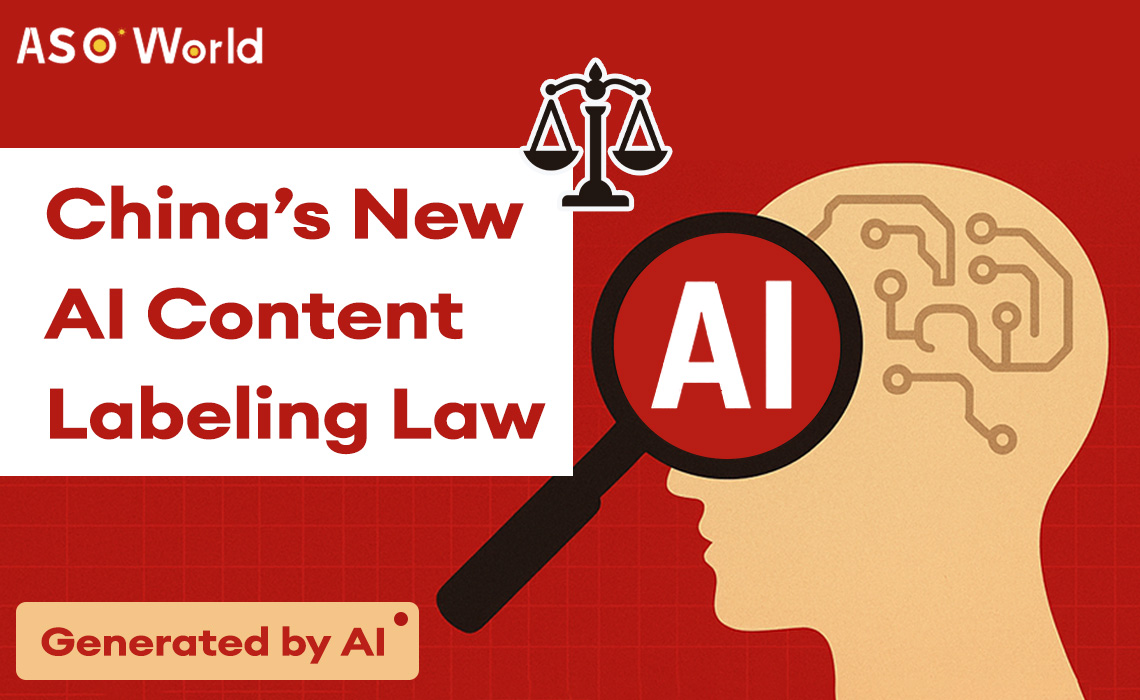China has implemented a groundbreaking law effective September 1, 2025, requiring all AI-generated content to carry clear labels to ensure transparency and curb misinformation.
Announced on March 14, 2025, by the Cyberspace Administration of China (CAC) and other ministries, the "Measures for Labeling Synthetic Content Generated by Artificial Intelligence" aim to regulate the rapidly growing field of generative AI, addressing concerns over deepfakes, false information, and public trust.
Overview of the New AI Labeling Law
The legislation, supported by the national standard GB 45438-2025, mandates both visible and hidden labels for AI-generated text, images, audio, video, and virtual scenes.
It builds on earlier regulations, such as the 2023 Deep Synthesis Provisions, and responds to global concerns about AI misuse, exemplified by a 2025 enforcement campaign that removed 960,000 pieces of illegal AI content.
Purpose and Scope
The law seeks to promote responsible AI development while protecting public interest.
It applies to internet service providers, including AI developers, social media platforms, app stores, and users, ensuring that AI-generated content is identifiable to prevent confusion or deception.
Key Requirements for Labeling
The measures introduce two types of labeling: explicit (visible or audible markers) and implicit (metadata or watermarks).
Explicit labels, such as "AI-generated" text or voice prompts, are required for content that could mislead the public, while implicit labels ensure traceability for all AI-generated outputs.
Explicit Labeling Guidelines
Explicit labels must be prominent—text must be at least 5% of an image's shortest side, and videos require markers at the start or end.
Audio content may use voice prompts or rhythmic signals like Morse code. Labels must remain intact when content is downloaded or shared.
Implicit Labeling for Traceability
All AI-generated content must include metadata with details like the service provider's name and content ID.
Digital watermarks are encouraged to ensure labels are tamper-resistant, aiding in accountability and verification.
Responsibilities Across the Ecosystem
The law assigns specific duties to various stakeholders.
AI developers must embed labels in their outputs, while platforms like WeChat and Douyin must verify and add labels, maintain logs for six months, and allow users to appeal incorrect labels.
Users are prohibited from removing or tampering with these markers.
Platform Compliance Efforts
Major platforms have swiftly adapted. WeChat, with over 1.4 billion users, auto-labels AI content and warns against tampering.
Douyin flags unlabeled videos, and Weibo offers tools for users to report violations, reflecting robust compliance with the new rules.
Global Context and Challenges
China's approach is more comprehensive than the EU's AI Act, effective in 2026, which focuses narrowly on deepfakes.
Unlike the U.S., where labeling is voluntary, China's mandatory rules set a global precedent.
However, challenges include ensuring label visibility, avoiding false positives on original content, and balancing innovation with regulation.
Editor's Comments
China's AI labeling law marks a significant step in addressing the ethical challenges of generative AI, setting a high standard for transparency globally.
By mandating both explicit and implicit labels, the law tackles misinformation head-on, though its broad scope may strain smaller platforms’ resources.
The emphasis on traceability aligns with global trends, as seen in the EU's upcoming regulations, but China's proactive enforcement, evidenced by its 2025 crackdown on 960,000 illegal AI items, underscores its commitment to control.
Looking ahead, the law could influence international norms, though its success hinges on consistent enforcement and technological advancements in detection.
The balance between regulation and innovation will be critical to avoid stifling AI development.
FAQs
1. What is China's new AI content labeling law?
Effective September 1, 2025, the law requires all AI-generated content to carry visible or hidden labels to ensure transparency and prevent misinformation.
2. What types of content are covered?
The law applies to AI-generated text, images, audio, video, and virtual scenes.
3. Who must comply with the law?
AI developers, social media platforms, app stores, and users publishing AI content must comply.
4. What are explicit and implicit labels?
Explicit labels are visible or audible markers like "AI-generated" text. Implicit labels are metadata or watermarks for traceability.
5. How are platforms like WeChat responding?
Platforms like WeChat and Douyin auto-label content, flag unlabeled items, and prohibit tampering, with tools for user reporting.
6. What happens if someone violates the law?
Violations fall under broader laws like the Cybersecurity Law, potentially leading to fines, content removal, or account suspensions.
7. How does China's law compare to global standards?
It's more comprehensive than the EU's AI Act and mandatory unlike the U.S.'s voluntary policies, setting a global benchmark.
8. What challenges does the law face?
Challenges include ensuring label visibility, avoiding false positives, and balancing regulation with AI innovation.

